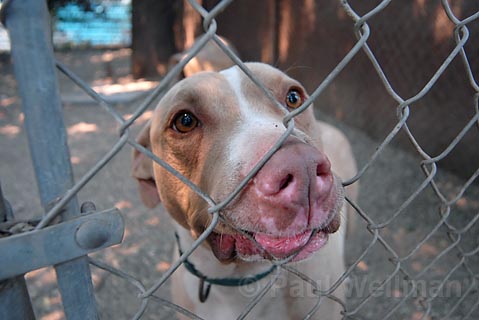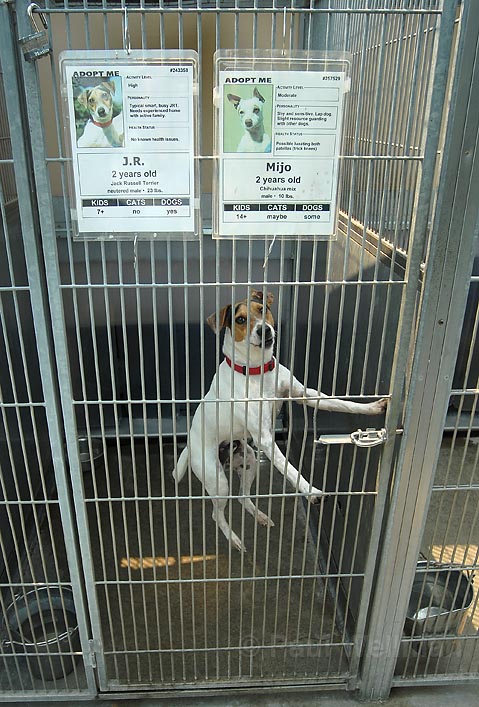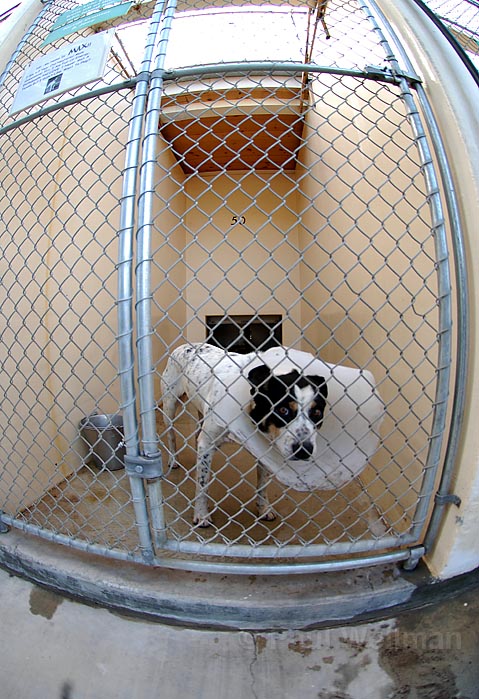Supes Pass Spay/Neuter Ball Back to Staff
Neuter Another Day

The Santa Maria Animal Center cares for homeless and stray animals-anything from cats and dogs to chickens and guinea pigs. But often the center lacks sufficient space for these animals, especially for cats and dogs. For example, its 78 dog kennels belie the fact that it houses more than 130 dogs. If the center can’t transfer the animals to another rescue organization, euthanasia becomes the only option.
The story is becoming more and more common at Santa Barbara County’s three shelters in Lompoc, Santa Maria, and Goleta, according to county staff. “The pet population problem we have is a difficult one,” said Michele Mickiewicz, assistant director of the Public Health Department. Of the many side effects of the overcrowding problem-overcrowded cages can stress out animals and help spread disease, for example-none is more tragic than having to kill animals.

Legislation addressing this issue and coauthored by Assemblymember Pedro Nava is making its way through the state: the California Healthy Pets Act, a two-year bill from 2007, which would require owners to spay or neuter most dogs and cats. All registered purebreds and animals used for herding, as well as police, service, and rescue dogs, would be exempt, however. The bill has gone through the Assembly and is currently in the Senate Local Government Committee, where it will be heard in the spring. Last year, Santa Barbara’s Board of Supervisors considered taking a position on the state legislation but held off, intending to localize the law to better reflect the needs of county residents.
And so the county has begun to think of ways to solve the dilemma. The matter was in front of the Board of Supervisors May 6, and more than 120 people showed to speak at the meeting, the room split for and against a countywide ordinance which would require dog and cat owners to remove their pets’ reproductive organs. After four hours of public comment, the supervisors ultimately decided to hand the ordinance back to county staff, who will work with a board-appointed task force of community members.

In addition to the county’s three shelters, three private humane societies and several private rescue organizations house animals throughout the county. The three county-run shelters take in 300 to 500 kittens alone each year. Many of the volunteers and workers representing the shelters told supervisors of their facilities being overburdened by the animal population and stressing the need for spaying and neutering. “The overwhelming evidence is that spaying and neutering is safe,” said Dr. Paula Kislak, board president of the Association of Veterinarians for Animal Rights and a Santa Barbara vet.
Meanwhile, opponents of an ordinance mandating spaying and neutering said such a law would be a good example of an intrusion of privacy. “This is a gross invasion of privacy rights and the right to choose what is best for our pets,” said Bill Hemby of pet owner advocacy group PetPAC, just one of several opposed to the ordinance who traveled from out of town to speak against it. Opponents aren’t against an ordinance so much as they are against making spaying and neutering mandatory. There is only a small population of pet owners who aren’t responsible for their pets’ reproductive habits, they argue, and thus they shouldn’t be penalized for others’ behavior.
Spay and neuter ordinances at the local level are nothing new to California. The city of Los Angeles, as well as San Mateo County, Santa Cruz County, and Sacramento County are just some of the places that have ordinances requiring that pets be spayed or neutered at four or six months old



